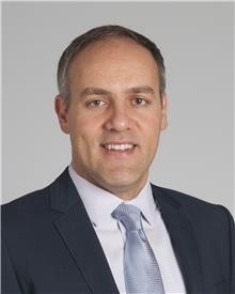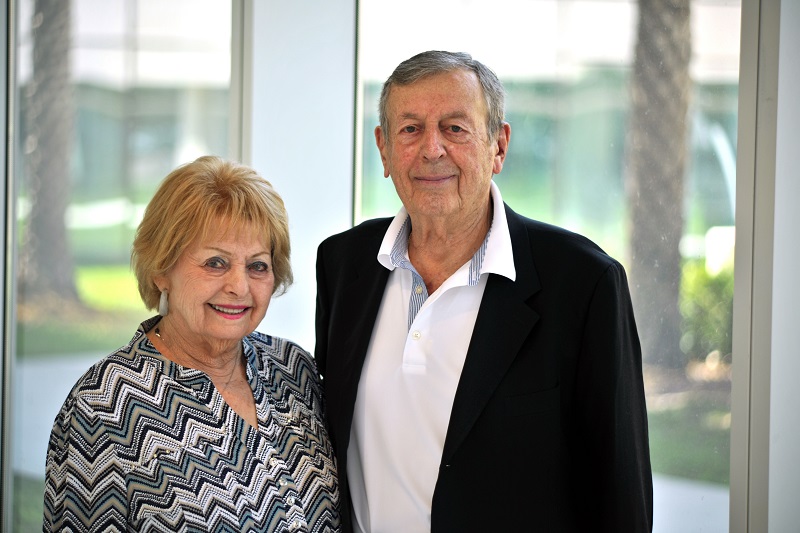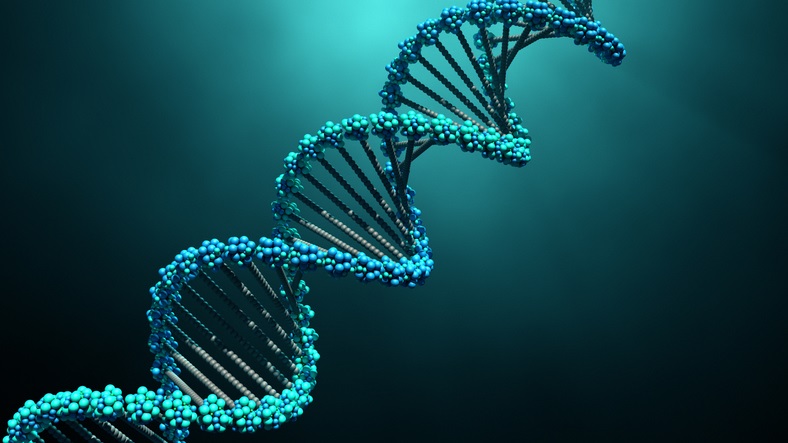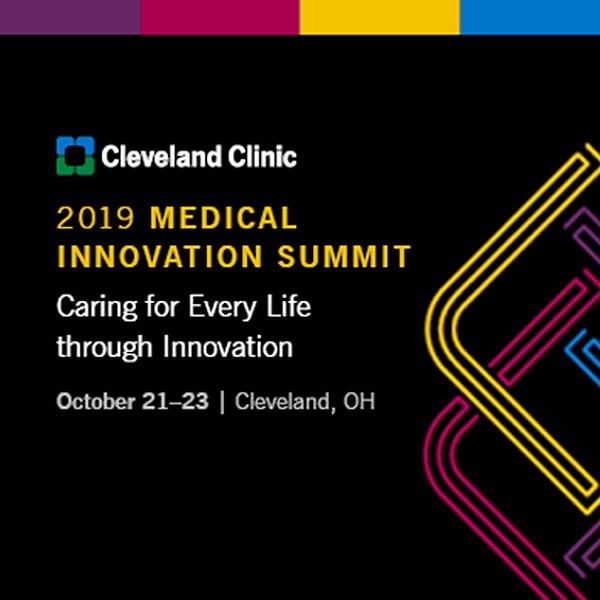MS, Microglia and Money: A Conversation with Dimitrios Davalos, PhD

“If you’ve ever taken any pill, for any reason, it happened because a few years before that, a researcher in a laboratory did an experiment with the medication,” Dimitrios Davalos, PhD, says.
Dr. Davalos, a researcher in the Department of Neurosciences at Cleveland Clinic Lerner Research Institute, is talking about the importance of funding basic research and how it impacts what happens in an operating room or in a physician’s office.
“What you see on the clinical side is the success story. It’s the final product and the ultimate goal of our findings,” he says. “It might take 5, 10 or maybe 20 years to translate our findings from the lab to the clinic, but if the funding isn’t there to take an idea and make it work in the petri dish, then we’re never going to get to the clinical trial – and then to patients all over the world.”
Recently Dr. Davalos and his team received a five-year, $2.4 million grant from the National Institute of Neurological Disorders and Stroke, part of the National Institutes of Health, to help fund his research into the early stages of multiple sclerosis, or MS.
He estimates that he worked on this research for more than three years before he could apply for federal funding. “So this cannot happen without seed funding from somewhere else,” he says. “We have all of these great ideas that have stemmed from prior experiments. But unless there’s seed funding, there’s no chance of federal funding, which is essential for thoroughly testing a promising hypothesis. So it is of paramount importance to have alternative funding sources to help us get these great ideas off the ground.”
Finding the Trigger to Prevent Progression
Dr. Davalos says that scientists already know a great deal about MS, an inflammatory disorder in which immune cells that normally protect us from infection or disease enter the nervous system and cause damage. “But we don’t know what starts it – the origin of MS is unknown. So until we find what causes MS, what is the next best thing we can do? Perhaps find the first wrong step our body takes and stop it right there,” he says. That was the line of reasoning he used to get his project started a few years back.
Under normal conditions, there is a physical border made up of healthy blood vessels between the brain and circulating blood, called the blood-brain barrier (BBB). However, this barrier becomes compromised very early in the course of MS, allowing immune cells from the blood to infiltrate the central nervous system and initiate a cascade of neurological damage.
“The body’s own immune system attacks itself,” Dr. Davalos says.
He and his team hypothesized that preventing BBB disruption will drastically reduce the inflammatory cascade that causes the neurological damage responsible for MS symptoms.
The NIH grant will allow his group to better characterize some of the earliest steps of the MS pathology: when the immune cells first cross the BBB and enter the brain. “If we zoom into that part of the process, can we identify the specific molecular signals that bring them in to attack the brain?” he asks. “There are several drugs available in the clinic today for MS patients, but most of them target the ability of the immune cells to enter the brain. This approach is very effective in reducing MS attacks, but may expose some patients to opportunistic brain infections, as their immune cells would be prohibited from entering the brain and protecting it. It is like fixing one problem, but taking chances with another,” Dr. Davalos explains. “If we manage to identify molecular signals specific to MS, then we can design new drugs that will be effective against MS immune attacks, without compromising a patient’s immune system.”
Today, a Different Set of Worries
When he was a child growing up in Athens, Greece, Dr. Davalos was interested in photography and using images to tell stories. “I’ve always been a very visual person with a curiosity about how things work, and this was well before the era of smartphone photography!” he jokes. This fascination led to his interest in studying the brain using imaging technologies.
During his graduate years he performed the first in vivo imaging study of microglia, the resident immune cells of the brain. Using advanced microscopy technologies that allow following the behavior of individual cells inside the living brain, in real time, he demonstrated that microglia continuously survey the intact brain, and can rapidly contain small localized injuries within just a few minutes. These findings challenged prior views regarding the role of microglia in the brain and inspired numerous new studies aimed at better understanding the mechanisms and the significance of such unexpected microglial abilities for neuronal development, plasticity, function and dysfunction.

“I was lucky, because I was at the right place at the right time, but I also persisted through problems, and worked crazy hours and days for this,” he says. “But in the end it was all worth it, because those early studies really kick-started my career, and opened up a whole new area of research that my team and many colleagues around the world are now pursuing.”
But these days, instead of investing all his time and attention on what we can learn from the next important experiment in the lab, Dr. Davalos says he spends much of his time worrying about how the work will be funded through next year and the year after. “Without secured long term funding, you cannot hire a person, train them properly and start collecting useful data. Fortunately or unfortunately, these are not trivial experiments to do, thorough analyses take time, and as experiments become more sophisticated and informative, the cost of reagents and essential equipment steeply rise too.”
“We now live in an era where we can finally pick up the big fights,” Dr. Davalos says. “We’ve pretty much cured simple pathogen diseases and have optimized most surgical procedures that can fix mechanical failures in our bodies.
“So we have raised our life expectancy and now we face pathologies that are far more complicated, have several confounding factors and likely involve life-long development, in addition to genetic traits and environmental triggers to present,” he explains. “Many neurological diseases are like that as they appear later in life and we keep discovering layers upon layers of factors affecting them, from diet and exercise, to prenatal exposure to pathogens and pollutants. Some of the more sophisticated enemies require more sophisticated approaches, which take a lot more time and effort, and that, of course, requires more money.”
How You Can Help
Scientists at Lerner Research Institute count on people like you who are interested in funding innovative and complex research. Your donation helps new ideas in medicine get noticed.
Couple Says Thanks for Good Health with Generous Gift

Lila and Robert Tickman recently celebrated two milestones – their 70th wedding anniversary and Mr. Tickman’s 90th birthday. The Weston area residents credit their good health and longevity in part to the care they have been receiving for almost 27 years at Cleveland Clinic Florida.
“I’m a steady customer here,” Mr. Tickman jokes. “Seriously, the good doctors at Cleveland Clinic have kept me healthy. They take good care of you here.”
The Tickmans, who retired to South Florida from their native Chicago in 1993, enjoy taking cruises and traveling with their friends and family, but they appreciate not having to “get on a plane and fly somewhere else for world-class healthcare.”
As grateful patients, they have a desire to ensure that excellent healthcare continues to thrive in the area. Their steady support of Cleveland Clinic Florida over the years has included hosting tables at benefits to raise funds for the Weston campus expansion and new emergency department.
This past March, Mrs. Tickman became a founding member of the Lozick Women’s Center, currently under construction. Dedicated to the screening, diagnosis and treatment of breast cancer, the center will provide a seamless, holistic experience for patients. It is funded entirely through philanthropy.
“We wanted to give money where it was needed,” Mrs. Tickman says. “Through this center, women with breast cancer will have just one place to go for all of their healthcare needs.”
Recently, the Tickmans made a significant gift to support the Internal Medicine Residency Program at Cleveland Clinic Florida. They deeply appreciate the care of their primary care physician, Darby Sider, MD, and would like to see her grow the program.
“We saw that the area needed support,” Mr. Tickman says. “We want to attract more residents to the program while enriching it with more educational opportunities.”
“We are so incredibly appreciative of the Tickmans’ gift, since we rely on philanthropy to expand our educational programs and serve our growing patient population,” Dr. Sider says. “A gift like this will allow us to provide valuable opportunities such as hosting visiting professors, learning about alternative medicine from our community partners and training our residents in mindfulness and well-being techniques, to name just a few.”
Mr. and Mrs. Tickman are pleased that they are able to contribute to Cleveland Clinic Florida. Their intent, they say, is to advance the level of care in Florida for generations to come.
How You Can Help
Are you thankful for the care you receive at Cleveland Clinic or for a certain doctor or nurse but not sure how to show your appreciation? A gift to our Caregiver Catalyst Grants fund is combined with others to support innovative projects from Cleveland Clinic caregivers who serve our patients and local communities. Learn why our Caregiver Catalyst Grants are important and how you can make a gift here.
Can Cancer Radiation Treatment be Optimized with Genomics?

Brian Yard, PhD, a postdoctoral fellow in Cleveland Clinic’s Lerner Research Institute, had a great idea: use emerging genomic technologies to predict how well a patient’s cancer would respond to radiation therapy.
“Patients typically are treated in a ‘one size fits all’ fashion based on the type of tumor: lung, breast, etc.,” says Dr. Yard, who works in the Translational Hematology & Oncology Research laboratory of Mohamed Abazeed, MD, PhD. “But this approach ignores the genetic complexity of cancer as tumors that have an abundance of gene mutations.”
Dr. Yard proposed a study to profile and identify various gene mutations in cancer cells that control how they respond to radiation therapy. With this information in hand, radiation oncologists could potentially predict how a patient’s tumor will respond to radiation.
There was just one problem: Dr. Yard didn’t have funding to pursue his idea.
But he’d recently learned about Caregiver Catalyst Grants, a new initiative from Cleveland Clinic’s Philanthropy Institute.
The Caregiver Catalyst Grants program is a unique way for Cleveland Clinic to reward its employees, referred to as caregivers, for innovative thinking and initiative. The grants pool thousands of donations into a fund that is allocated to bright ideas submitted by hundreds of caregivers. Because funds are limited, not every idea can be rewarded, making the program highly competitive.
In its first round in January 2019, the Caregiver Catalyst Grant program had 153 applicants, of whom 29 received grants – including Dr. Yard’s proposal.
So How’s It Going?
Dr. Yard and his team — Aaron Petty, MS; Jessica Castrillon, MS; and Priyanka Gopal, PhD — divided the project into three steps: first, selecting candidate mutations to study; then cloning these mutations into immortalized cell lines; and lastly, measuring the impact these mutations have on cellular survival following radiation treatment.
To identify candidate mutations to study in Step 1, Dr. Yard prioritized variants from more than 1,400 genes using computer algorithms to find mutations that are associated with sensitivity or resistance to radiation.
In the second step, Dr. Yard use standard molecular biology and cloning techniques to individually express these mutations in immortalized lung and breast cells. To date, he has successfully generated more than 500 mutated cell lines.
Dr. Yard is excited to begin Step 3 of his hypothesis and says the remaining grant funding will be used to purchase supplies needed to determine the impact the genetic variants have on radiation survival. “We and others have previously demonstrated that squamous lung cancer cells with certain mutations in the gene NRF2 tend to be resistant to radiation. NRF2 is a master regulator of cellular survival to genotoxic stress, similar to what occurs during radiation treatment. Introducing these same NRF2 mutations into our immortalized cells made them more resistant to radiation.” He plans to test all 500 mutant cell lines using the same approach.
Dr. Yard says the grant also helped facilitate the formation of the Radiogenomic Atlas team within his research group. “This is a collaborative effort that brings together research fellows, technicians, graduate students and clinicians to discuss how we can advance precision radiotherapy with the ultimate goal of improving the lives of the patients we treat at Cleveland Clinic.”
Dr. Yard is grateful for the funding from the Caregiver Catalyst Grant and hopes that his project will impact cancer radiation treatment. “Since half of all cancer patients receive radiation therapy at some point during the course of treatment, we hope that radiation therapy can eventually be optimized on a patient basis based on genetic complexity,” he says.
How You Can Help
When you make a gift to our Caregiver Catalyst Grants fund it’s combined with other gifts to support innovative projects from Cleveland Clinic caregivers who serve our patients and local communities. 100% of your gift to the Caregiver Catalyst Grants will advance projects like Dr. Yard’s that lay the groundwork for medical breakthroughs, expand patient support services, and support community health and wellness programs.
Join us at the Cleveland Clinic Medical Innovation Summit

Personalized healthcare. Artificial intelligence. Strategic investing to help translate healthcare technology.
More than 2,000 healthcare influencers and leaders will gather in downtown Cleveland for Cleveland Clinic’s Medical Innovation Summit from Oct. 21 to 23, 2019, to focus on these topics and more.
Organized by Cleveland Clinic Innovations, the development and commercialization arm of Cleveland Clinic, the Medical Innovation Summit brings together thought leaders and their passion about healthcare. The goal is not only to connect these individuals but to celebrate new ideas that are happening here and around the world. Come discover what technologies and challenges are top of mind for healthcare's foremost leaders and connect with those who have the power to impact real change.
The summit also provides the opportunity to learn more about plans for Cleveland Clinic’s new Neurological Institute facility – and why it’s so important now.
Disrupting Neurological Diseases Through Innovation
Did you know that more people around the world are being diagnosed with neurological diseases like Alzheimer’s disease, Parkinson’s disease, stroke and multiple sclerosis than ever before? Demographic studies point to a tsunami of these diseases ahead with an immense toll on our families, communities and economies. But disruption is possible, through innovation.
Andre Machado, MD, PhD, the Charles and Christine Carroll Family Endowed Chair in Functional Neurosurgery and Chairman of Cleveland Clinic’s Neurological Institute, and Ronn Richard, President and CEO of the Cleveland Foundation, will lead the audience through an engaging conversation about the clinical, research and funding approaches needed to change the course of these diseases. Their session, “Our Moonshot: Disrupting Neurological Diseases Through Innovation,” will take place October 22, 2019 at 4:15 p.m.
In keeping with tradition, the summit will close with the exciting announcement of Cleveland Clinic’s Top 10 list of breakthrough technologies for the coming year.

